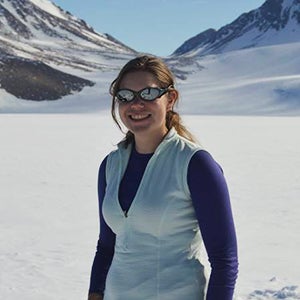
A team of researchers led by Water Institute member Dr. Christine Dow, a professor in the department of Geography and Environmental Management and cross-appointed to the Department of Applied Mathematics, discovered the river from a series of airborne radar surveys and modelling. Their findings show the ice sheet's base has more active water flow than previously thought, which could make it more susceptible to changes in climate.
"From satellite measurements, we know which regions of Antarctica are losing ice and how much, but we don't necessarily know why," said Dow. "This discovery could be a missing link in our models. We could be hugely underestimating how quickly the system will melt by not accounting for the influence of these river systems."
The Antarctic Weddell Sea region, where this study is based, holds enough ice to raise the sea level globally by 4.3 meters, and the newly discovered river will play a key role in that sea level rise. Dow and her colleagues showed that the large volume of freshwater pumped from the river into the ocean causes enhanced melt at the sensitive region where ice flows into the ocean and begins to float. In the future, if warm air temperatures cause enough surface melt to reach the ice sheet's base, it could tip Antarctica to a Greenland-like state, with much higher volumes of freshwater flowing into the ocean. More freshwater in the river will likely lead to more ice shelf melt, shrinking of the ice sheet, and an increase in ice flow rate. Ultimately, these controls on the flow of the ice into the ocean will determine much of the future sea level rise.
"Only by knowing why ice is being lost can we make models and predictions of how the ice will react in the future under further global heating and how much this could raise global sea levels," Dow said.
Scientific discoveries like this one are crucial for understanding climate change impacts and helping us understand our warming planet.
Read Dow's study Antarctic basal environment shaped by high-pressure flow through a subglacial river systempublished in the journal of Nature Geoscience.
Listing
photo:
Christine Dow
A
University
of
Waterloo
Press
Release.